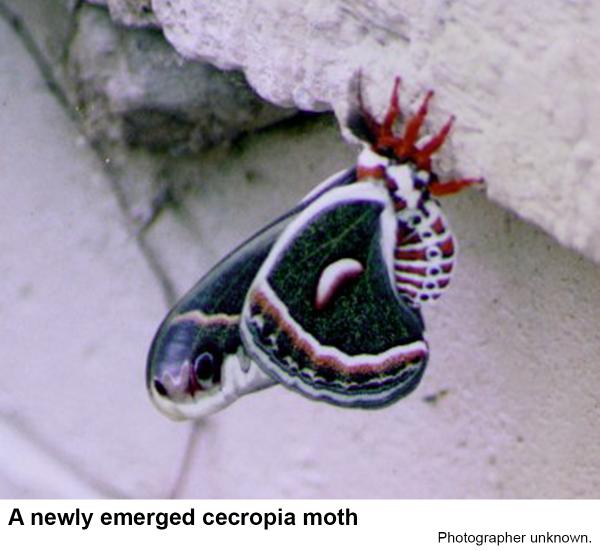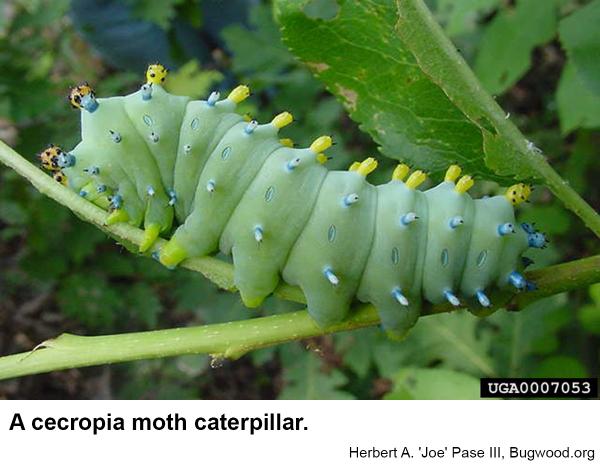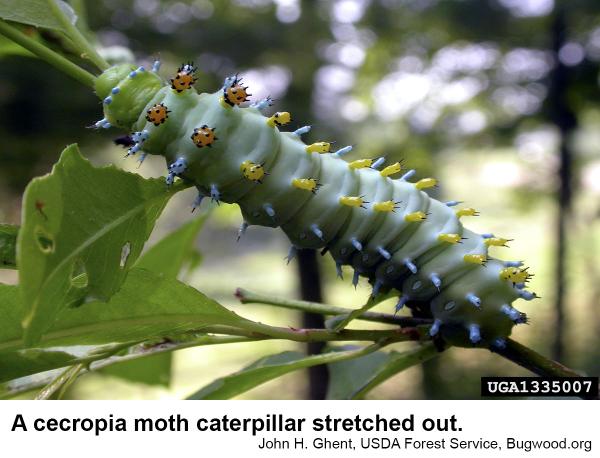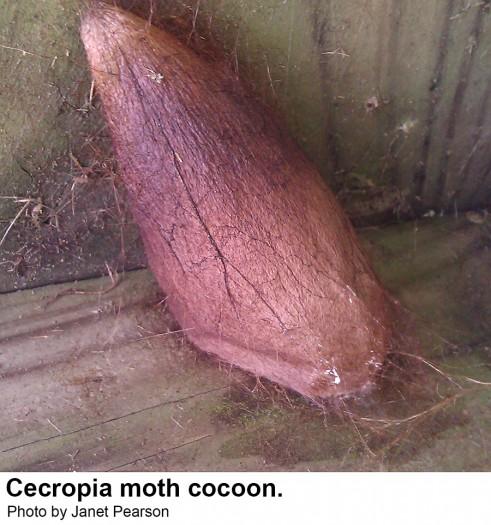Description and Biology
The cecropia moth, Hyalophora cecropia, is our largest moth. It is in the family of giant silkworm moths, so called because the caterpillars spin tough, brown cocoons of silk and because the caterpillars tend to be large. They overwinter as pupae in cocoons attached to the twigs of the trees on which they feed. The following spring the moths emerge to mate and lay about 100 white and brown mottled eggs in small groups on the stems and foliage of a variety of hard wood trees particularly maple, cherry, and birch. Although the female moths lay many eggs, their caterpillars are never abundant perhaps because birds find them to be highly attractive for food plus caterpillars in general suffer from predaceous and parasitic insects as well as diseases. Newly hatched caterpillars are tiny, black, and spiny. Over the course of the summer, the caterpillars grow to 4 inches long and become pale green. The caterpillars have four reddish knobs on the thorax and fifteen yellowish knobs in pairs along the back (except for the last single yellow knob). They also have two rows of blue knobs along each side. All of the knobs have tiny black spikes. Cecropia moths lack functioning mouthparts and live for about two weeks. We have only one generation per year.
Host Plants
Cecropia moth caterpillars feed on primarily on birch, cherry, and maple. They have been collected on more than 20 plant families. They are rarely abundant enough to cause any noticeable damage.
Residential Recommendation
Although the female moths lay hundreds of eggs, their caterpillars are never abundant perhaps because birds find them to be highly attractive as food. No control measures seem to be needed.
References
- Cecropia silkmoth, Hyalophora cecropia (Linnaeus, 1758). Anonymous. 2022. Butterflies and Moths of North America.
- Common name: cecropia moth, cecropia silkmoth, robin moth; scientific name: Hyalophora cecropia Linnaeus (Insecta: Lepidoptera: Saturniidae: Saturniinae: Attacini). Gallice, G. R. 2010. Featured Creatures. Entomology & Nematology, FDACS/DPI, EDIS.
- Hyalophora cecropia. Anonymous, 2018. Wikipedia, the Free Encyclopedia.
- Extension Plant Pathology Publications and Factsheets
- Horticultural Science Publications
- North Carolina Agricultural Chemicals Manual
For assistance with a specific problem, contact your local N.C. Cooperative Extension Center
This Factsheet has not been peer reviewed.
Publication date: Nov. 19, 2012
Revised: Sept. 18, 2019
N.C. Cooperative Extension prohibits discrimination and harassment regardless of age, color, disability, family and marital status, gender identity, national origin, political beliefs, race, religion, sex (including pregnancy), sexual orientation and veteran status.





